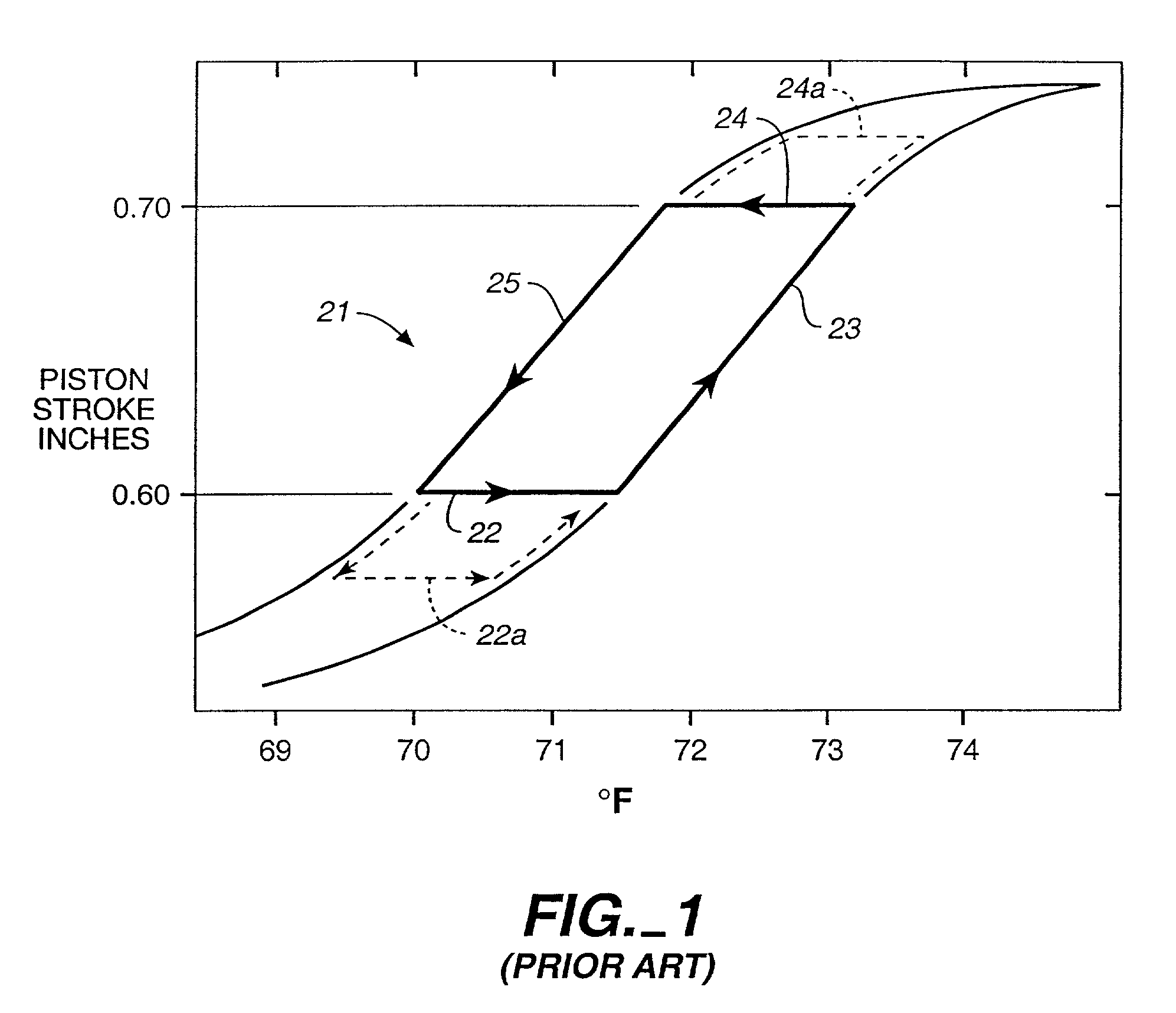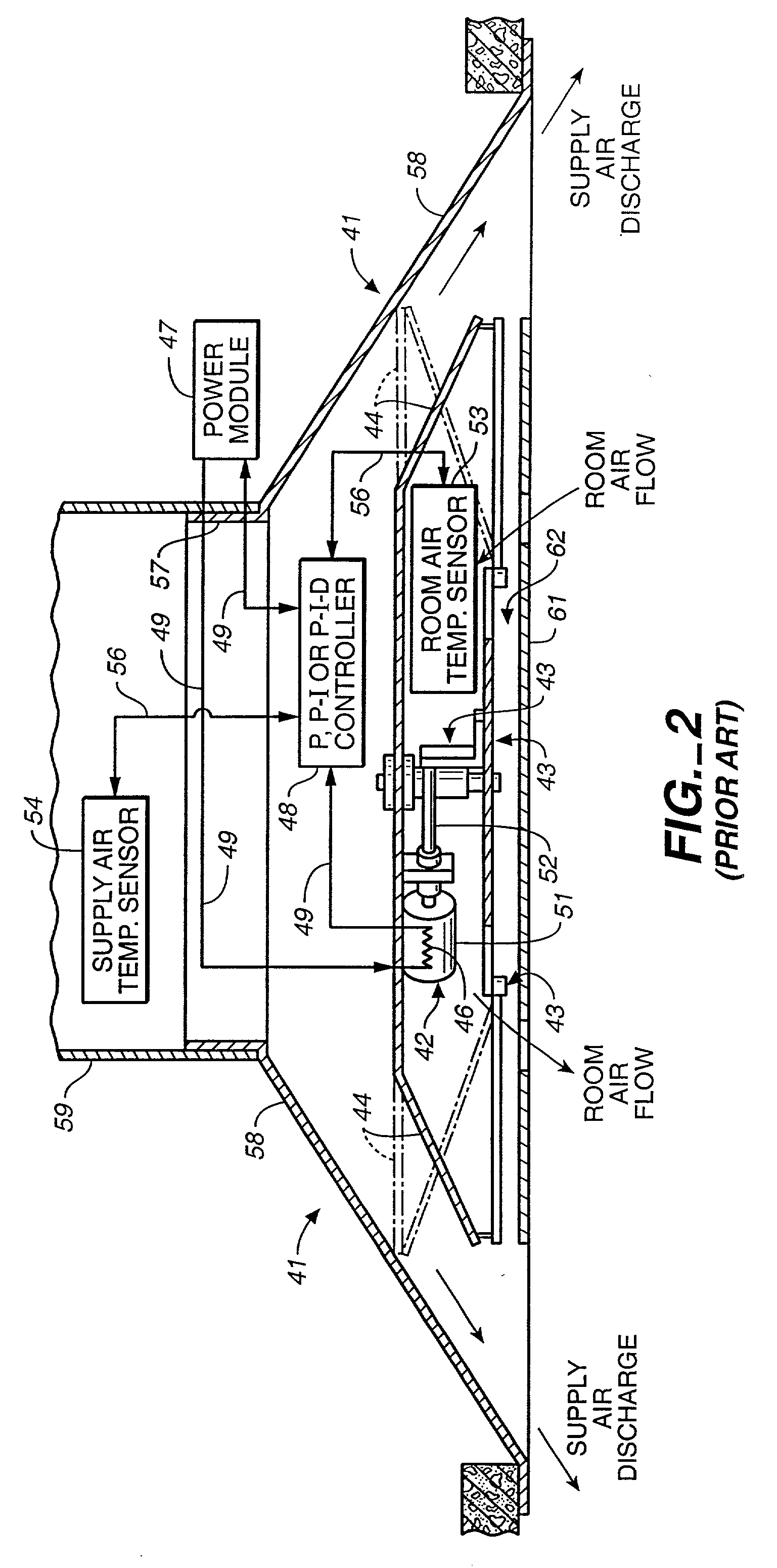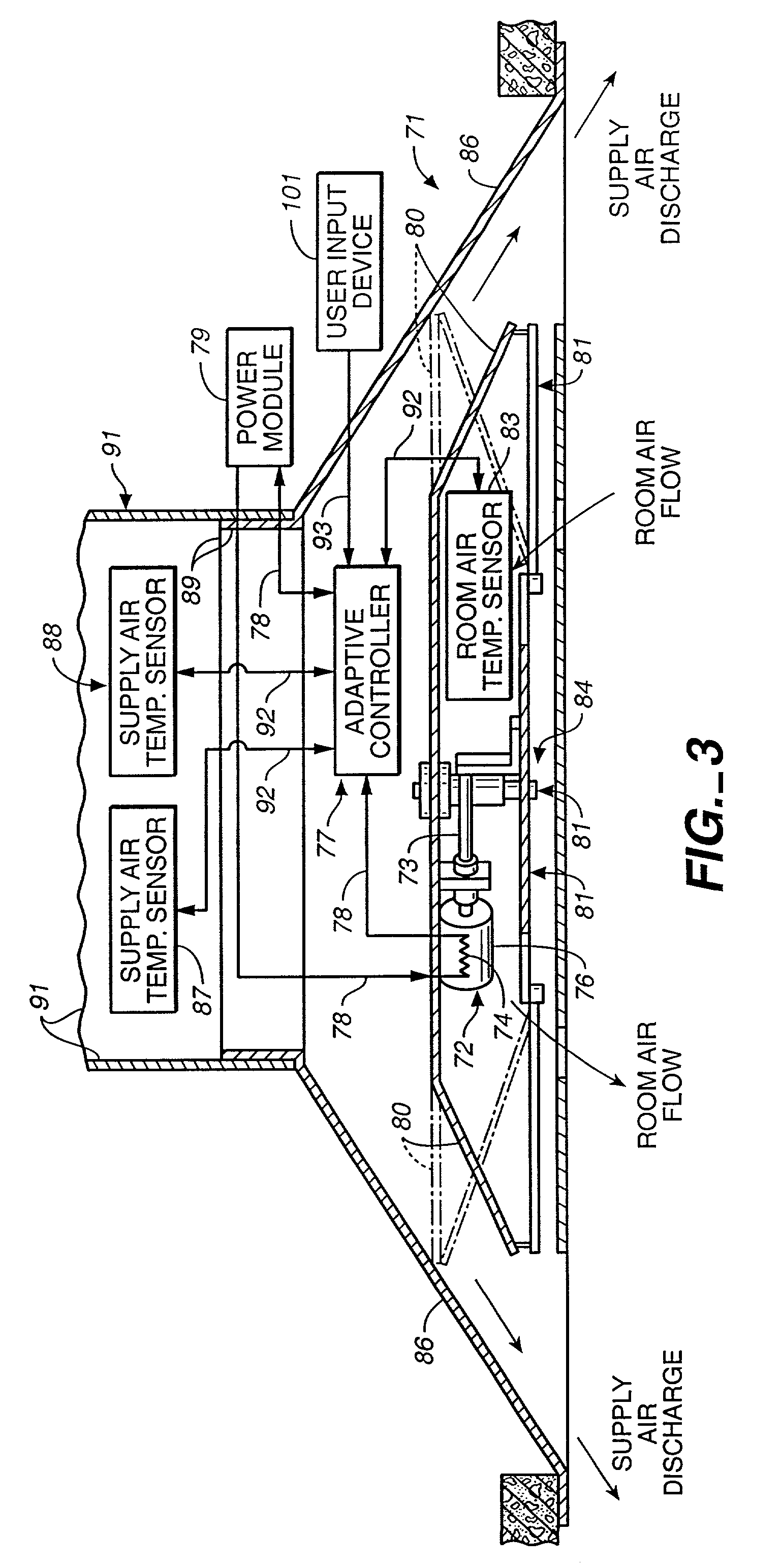Variable-air-volume diffuser, actuator assembly and method
a variable-air-volume, actuator technology, applied in the direction of ventilation systems, heating types, instruments, etc., can solve the problems of requiring considerable time not, hysteresis in thermally-powered, vav, diffuser assemblies,
- Summary
- Abstract
- Description
- Claims
- Application Information
AI Technical Summary
Benefits of technology
Problems solved by technology
Method used
Image
Examples
Embodiment Construction
[0060] The most preferred embodiment of the present invention is a variable-air-volume diffuser which is adaptively controlled to respond to sensed room air temperature so as to intelligently and autonomously control the volume of supply air discharged into a room or space. The present invention, however, has applications beyond HVAC systems. Thus, an actuator which is adaptively controlled using the teaching of the present invention can be applied, for example, to the operation of valves for the control of the flow of liquids. Similarly, the present invention is most preferably directed to the control of wax-based thermal actuators, but it also may be used to adaptively control the operation of other thermal actuators, such bimetallic or memory metal thermal actuators, and to control the operation of non-thermal actuators such as electric motors, piezo-electric actuators, pneumatic actuators and hydraulic actuators, among others.
[0061] As seen from FIG. 1, thermal actuators convent...
PUM
 Login to View More
Login to View More Abstract
Description
Claims
Application Information
 Login to View More
Login to View More - R&D
- Intellectual Property
- Life Sciences
- Materials
- Tech Scout
- Unparalleled Data Quality
- Higher Quality Content
- 60% Fewer Hallucinations
Browse by: Latest US Patents, China's latest patents, Technical Efficacy Thesaurus, Application Domain, Technology Topic, Popular Technical Reports.
© 2025 PatSnap. All rights reserved.Legal|Privacy policy|Modern Slavery Act Transparency Statement|Sitemap|About US| Contact US: help@patsnap.com



